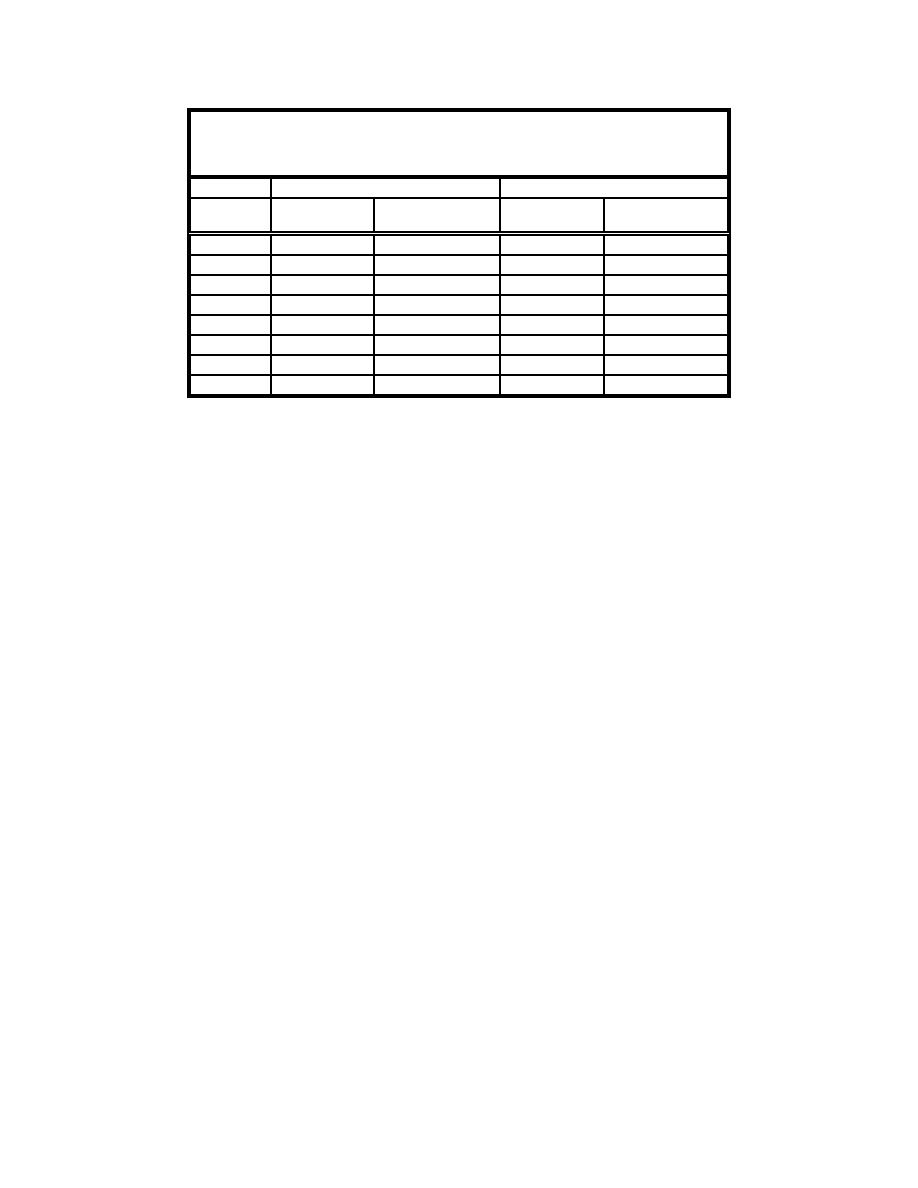 |
||
|
|
||
|
Page Title:
H.3 Laboratory Plant Bioaccumulation Procedures |
||
| |||||||||||||||
|
|
 Table H.2
-1
DTPA-Predicted Plant Metal Concentrations (ug g ) and Total
Plant Bioaccumulation (ug)
Wet
Oven Dry
Total
Total
Metal
Concentration
bioaccumulation
Concentration
bioaccumulation
0.576
0.977
0.324
0.608
2.23
49.54
1.95
31.67
Cadmium
12.33
15.93
9.33
22.10
21.02
178.48
26.04
162.5
Copper
2.07
6.86
1.63
9.81
Lead
0.01
-0.38
0.048
-1.59
Mercury
6.04
-20.62
5.32
5.45
Nickel
35.09
1321
44.1
2202
Zinc
H.3 Laboratory Plant Bioaccumulation Procedures
H.3.1 Plant bioaccumulation/toxicity assessment
The plant bioaccumulation procedure consists of the exposure of index
plants to dredged material and a reference soil or sediment. The dredged
material and reference material are prepared to simulate wetland conditions or
are processed by drying and oxidation to simulate terrestrial conditions before
being planted with seedlings of the appropriate specie. Spartina alterniflora
(SA) and is used for saline wetland conditions. Cyperus esculentus (CE) is used
for fresh wetland, fresh terrestrial, and saline terrestrial conditions. The
procedure calls for sediment exposure through maturity of the plant in an
environmentally controlled greenhouse. Aboveground plant tissues are harvested
and analyzed for COC concentrations.
H.3.2 Apparatus and materials
Apparatus. The apparatus for performing the plant bioaccumulation
procedure is shown in Figure H.1. It is basically a double bucket with an inner
bucket that allows water flow through holes in the bottom. The purpose is to
facilitate adequate watering by adding water to the outer bucket and allowing
movement of water by hydraulic pressure into the inner bucket through the holes
in the bottom. A soil tensiometer placed in the sediment indicates when enough
water has been added to bring the sediment to approximately field capacity
moisture content.
Materials. Tubers of yellow nutsedge (Cyperus esculentus) can be
obtained through commercial suppliers (for example, Valley Seed Services,
Fresno, CA, or Wildlife Nurseries, Oshkosh, WI). Tubers are germinated prior
to use in the plant bioaccumulation procedure. The tubers are first rinsed in
distilled water and then placed between paper towels and kept moist and at 23 οC
in a lighted germination chamber. Generally, the germination rate is low and the
H5
Appendix H Plant Bioaccumulation Procedures
|
|
Privacy Statement - Press Release - Copyright Information. - Contact Us - Support Integrated Publishing |